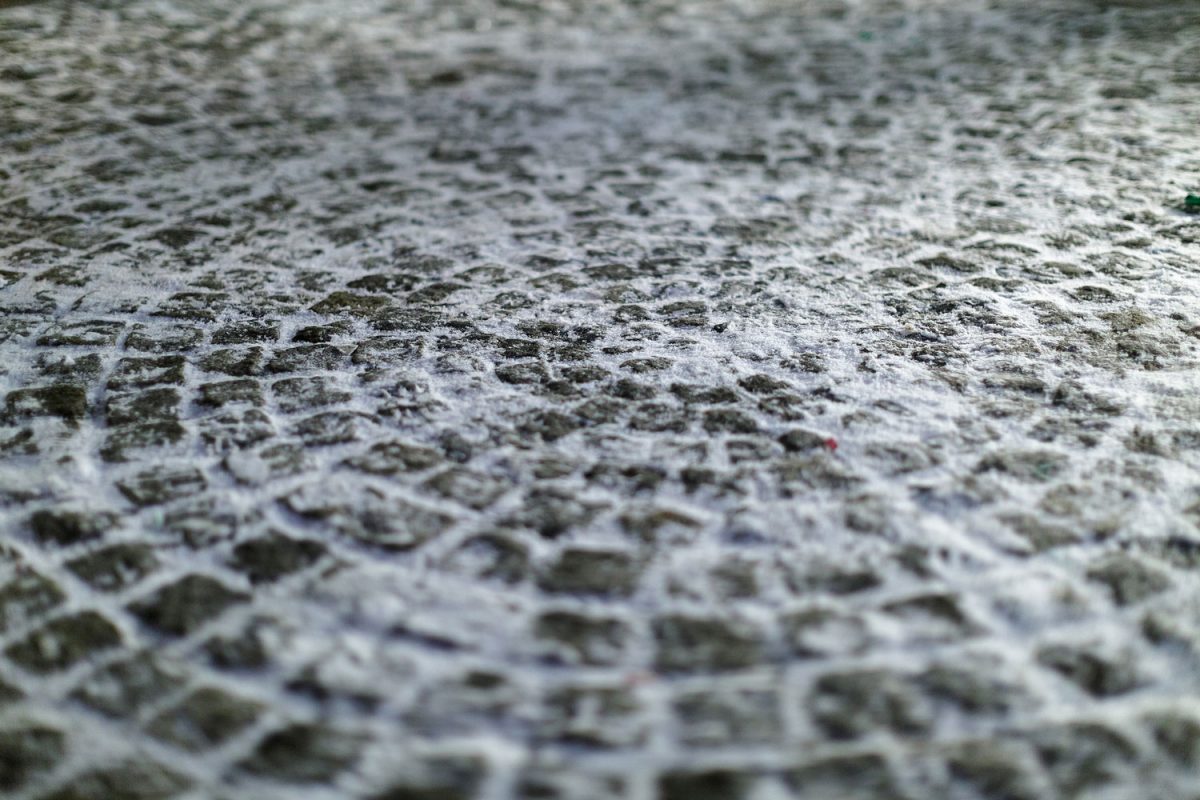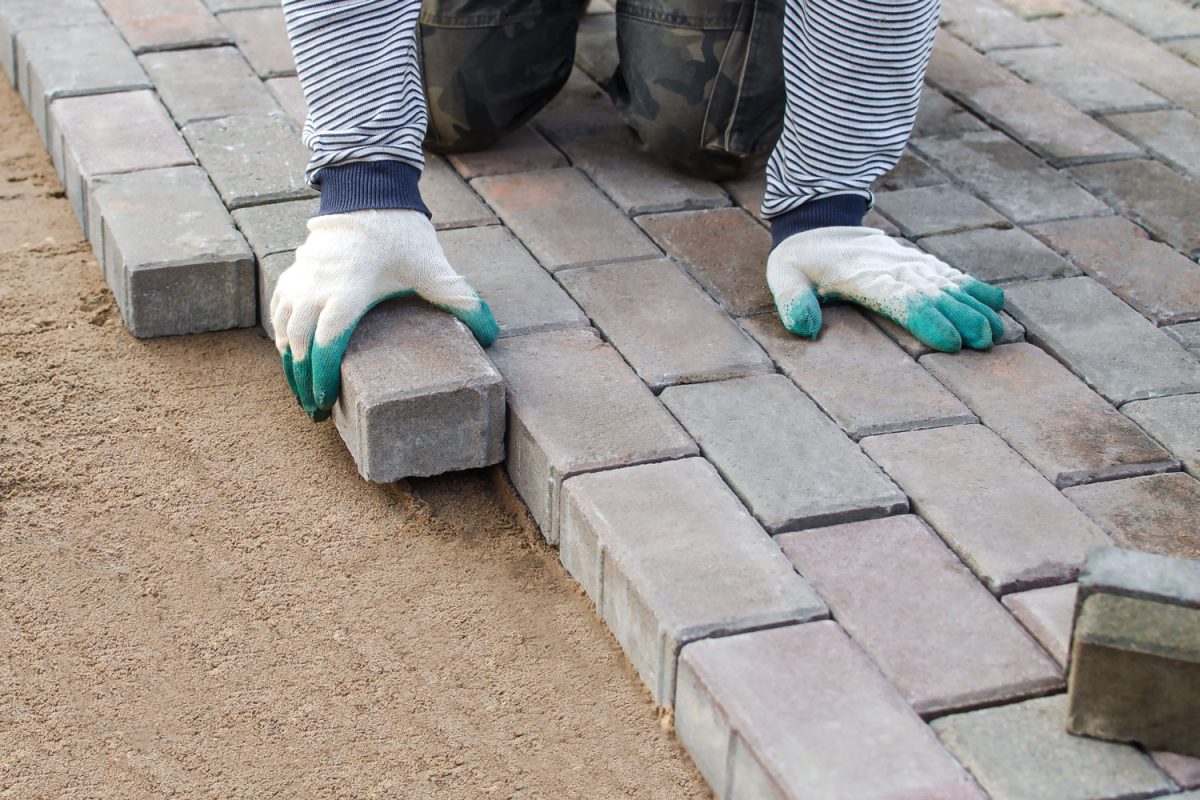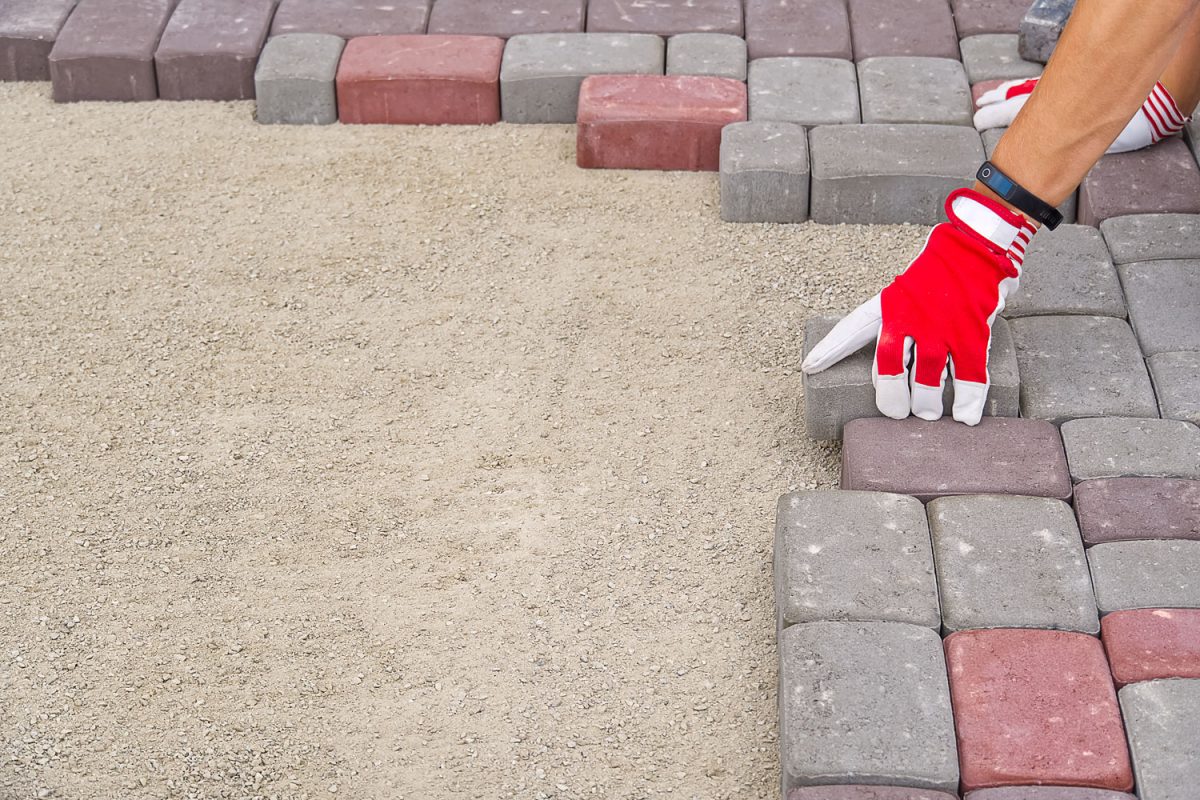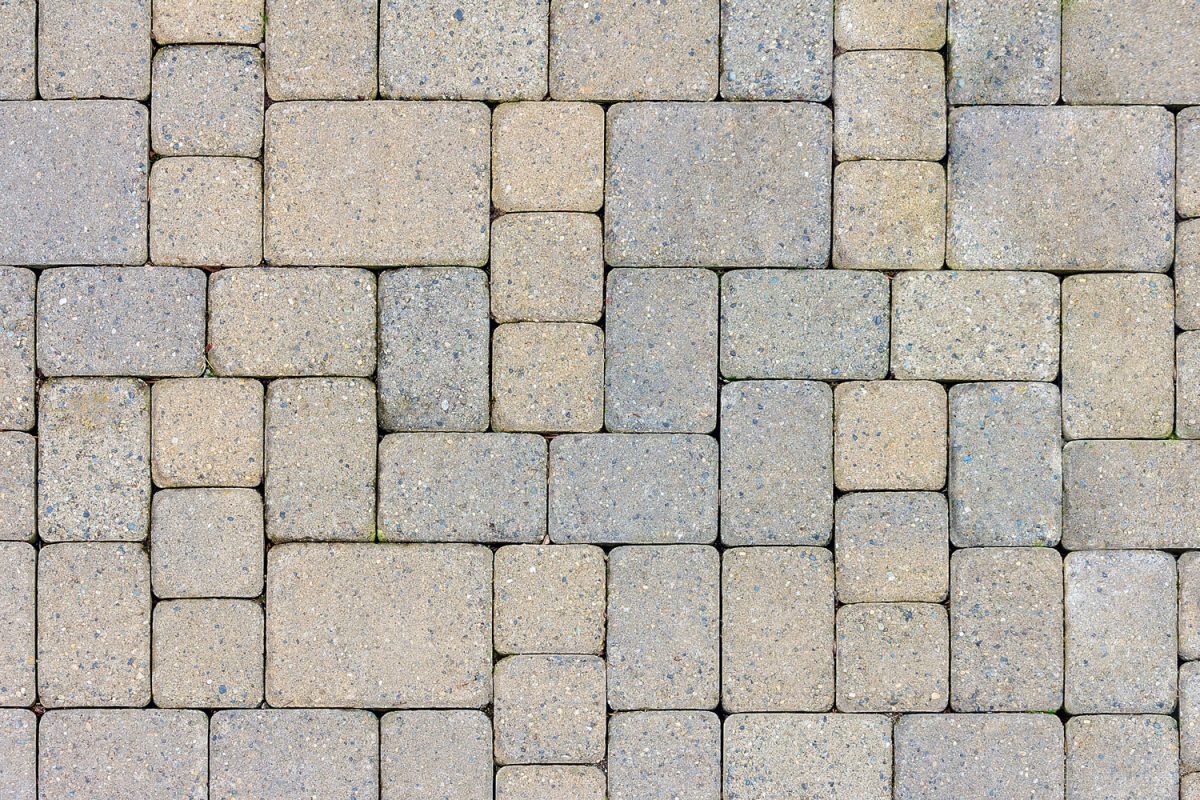Disclosure: We may get commissions for purchases made through links in this post.
Are there cracks in the joints of your pavement where weeds and grass have started to grow? Perhaps you're thinking if you can just reapply polymeric sand to stop the weeds from spreading and make your pavement look better. We asked experts if it would be wise to do this and here's what we learned from them.
It is not recommended to reapply polymeric sand over existing paver sand. You need to remove the old sand before you put the new so that you can be sure that it'll adhere to the surface properly. This needs to be done when there are large cracks on the joints which are bound to happen every 10 years or so depending on the quality of your paving material, its installation, drainage, and weather conditions.
Keep on reading so we can tell you more about reapplying polymeric sand on your pavement joints. We'll also answer why your polymeric sand is not hardening and how long it would take for polymeric sand to cure. Let's get this started!
![Pavement installer placing brick pavers for the patio, Can Polymeric Sand Be Reapplied? [And How Often]](https://pavingplatform.com/wp-content/uploads/2022/02/Can-Polymeric-Sand-Be-Reapplied-And-How-Often-800x1200.png)
Can I reapply polymeric sand?
Polymeric sand helps you maintain the nice appearance of your pavement. As you probably know, pavers are individual pieces of bricks, concrete, stone, or other materials that you put together according to the design and style that you want for your landscape. They conveniently interlock together to provide a solid look.
However, there are inevitably small spaces in between that need to be filled to seal the gaps and give the pavement a cleaner and finished look. One such product used for filling those gaps is polymeric sand. It is also known as paver sand, hardscape sand, or jointing sand.

It is made up of fine grains of sand together with some additives that act as adhesives. When mixed with water, these particles harden which makes them great for locking the pavers in their place along with the other concrete elements used. It is quick and easy to install. It also comes in various colors that would complement the look of your entire landscaping.
Check out this polymeric sand on Amazon.
Aside from keeping the pavers locked together, polymeric sand also prevents weed growth and pest infestations such as ants. These issues not only affect the overall look of your pavement but also threaten its durability.
Long-lasting Polymeric Sand
But alas, even polymeric sand has a limited lifespan. It can last for 10 to 15 years depending on the quality of the chosen product. Some have shorter lifespans due to improper installation, poor drainage, and extreme weather conditions. When this happens, the sand will erode, its color would fade, and there will be noticeable deep spots in some areas.
This will also allow weeds and ants to infest certain portions of your pavement. That's why some homeowners want to know if they could reapply polymeric sand on these problematic areas. Would it be wise to put it over the existing polymeric sand?
Remove the Old Before Reapplying New

According to experts, it isn't ideal to reapply polymeric sand over an existing one. The original sand may be dirty and is already old so they won't stick together properly. There should also be enough depth, around 1-1/2 inches, for this jointing sand to be effective.
It's best to remove all the remaining sand first before putting in the new one. You can do this by pressure washing your pavement. Soak the sand with water to soften it and then you can easily remove the loose portions as well as all the dirt and grime on its surface.
Here's a tip from the experts. Make sure the washer has a pressure of at least 3,000 psi and use a 25-degree tip so that you can safely and efficiently remove the existing sand.
How often do you need to replace polymeric sand?
We understand that replacing the jointing sand can be a hassle because it would eat up your time, energy, and money. Don't worry because you don't need to reapply the paver sand frequently. It is durable and won't easily be washed away by heavy rains.
As mentioned above, polymeric sand has a life expectancy of 10 years and beyond especially if you used a really good quality of paver sand and installed it properly.
When the time comes that there are deep cracks in the joints of your pavement, that's when you need to reapply polymeric sand as this would compromise the durability of your entire hardscape. Weeds and pests can overrun or take over your pavement that will ruin not just its appearance but its core. That's why you need to fill those gaps and seal them to protect your hardscape.
Why is my polymeric sand not hardening?

Certain properties of polymeric sand allow it to harden upon contact with water. This is what makes it such an effective binding material for your pavers. But it won't be the case when your paver sand doesn't harden enough. To test if the polymeric sand has hardened, you can try pushing a screwdriver against the joints. If it's able to penetrate inside, then your paver sand didn't set properly.
The Culprit: Moisture
The main reason why your polymeric sand is not hardening is moisture.
It is important to read the manufacturer's instructions and recommendations when applying polymeric sand in between your pavers. They will tell you the specific paver sand to water ratio so that their product will effectively harden and bind your concrete pavers. Too little water will make it crusty and cause it to crack. Too much water reduces its ability to bind the pavement materials and it won't harden at all.
You should also check the weather before proceeding with this hardscaping project. If it rains, your paver sand won't dry and set properly. It would also be hard to dry the jointing sand completely during fall and early spring when the days are shorter and outside temperatures are lower. You would need at least two consecutive sunny days to give the polymeric sand sufficient time to set.
If ever your paver sand doesn't harden due to too much water or sudden rain, you can just remove the polymeric sand that you've applied and fill the joints with a new batch of paver sand. This time, make sure that the weather is sunny and use enough water to activate the ingredients that'll allow it to harden.
Additional Factors Preventing Hardening
However, other factors can also contribute to the reason why your polymeric sand is not hardening. During installation, make sure that the polymeric sand is compacted. The base material should also be pitched the right way. The presence of stone dust, dirt, and other unnecessary particles would also prevent paver sand from drying completely.
It is important to ensure that the proper conditions are in place before you apply your polymeric sand so that you won't have to redo the job and waste your time, energy, and money.
How long does it take for polymeric sand to cure?

Polymeric sand cures as it dries. For it to cure properly, it has to dry completely. It usually takes 24 hours for this to happen. However, when it is used for your driveway, give it at least 48 hours before you allow vehicles to pass through the pavement. Take note that if it doesn't dry all the way, it will affect the jointing sand's lifespan.
Once it dries, it isn't a guarantee that your polymeric sand has already cured. In fact, the curing process takes weeks or a full month. That's why it is advised that you don't clean, pressure wash, and seal your pavement within a month after applying the paver sand to give it enough time to rest and settle all the way.
Final Thoughts
![Pavement installer placing brick pavers for the patio, Can Polymeric Sand Be Reapplied? [And How Often]](https://pavingplatform.com/wp-content/uploads/2022/02/Pavement-installer-placing-brick-pavers-for-the-patio-1200x800.jpg)
When the time comes that there are obvious cracks in your pavement joints, remove the remaining polymeric sand first before filling the gaps with a fresh batch of paver sand. This will seal the gaps effectively rather than just reapplying them on top of the existing joint fillers.
You might also like to read about using asphalt in your driveway, feel free to visit the following links:


![Vibrant Red Paver Stone Path, Can You Spray Paver Sealer? [How To Apply It]](https://pavingplatform.com/wp-content/uploads/2022/04/Vibrant-Red-Paver-Stone-Path-600x400.jpg)
![Properly laid out red pavers for a garden, Can You Tint Paver Sealer? [And How To]](https://pavingplatform.com/wp-content/uploads/2022/04/Properly-laid-out-red-pavers-for-a-garden-600x400.jpg)
